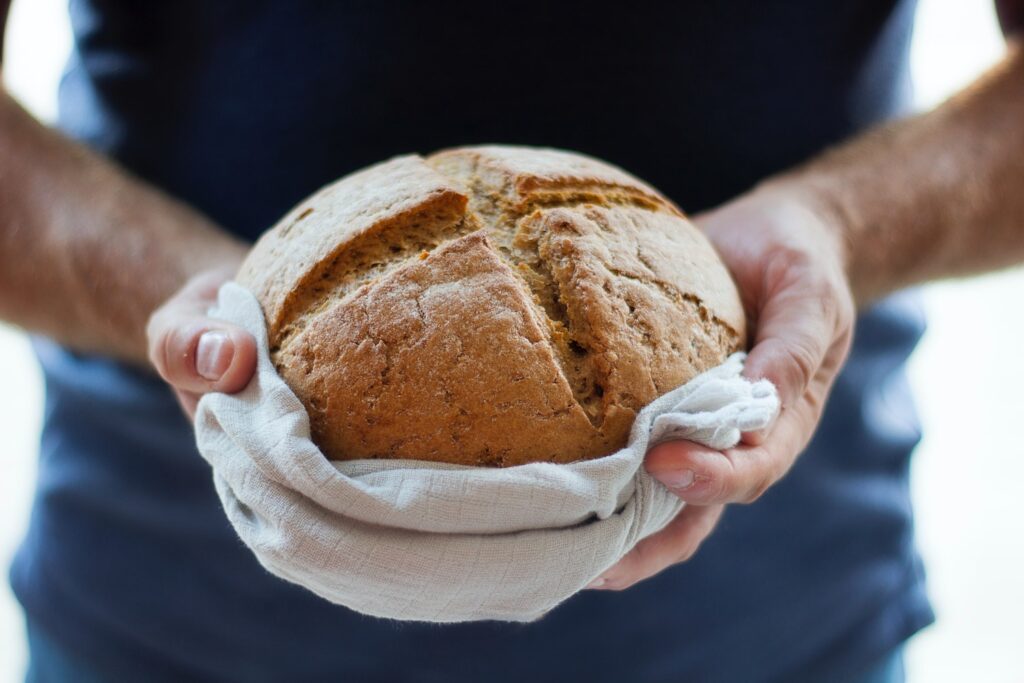The Triad of the Mediterranean Diet, though having ancient roots, has been restyled and redefined by Christianity and is still quite present today. When southern Europe and the Mediterranean basin was converted to Christianity, the fundamental elements of the triad remained. Old myths were not abandoned, partly because of their grip on peoples’ collective imagination, but were simply given a Christian interpretation. Instead of recreating new mythology, the Christians recycled the existing myths and adapted them to their teachings. In this way the three elements of the triad, wheat, oil and wine, were in a sense baptized.
Bread, for example, had already been linked to the pre- Christian divine deity, and was now connected to the figure of Christ. This is also undoubtedly because Bethlehem in ancient Hebrew means ‘the city of bread’ and was well known for its skilled bread makers. Very often in his gospels, Christ spoke of spiritual nourishment from the ‘bread of life’, and in the last supper the bread broken at the table represents his body, the wine his blood. Bread then came to represent common people or community, the word ‘company’ in fact comes from ‘cum panis’, meaning ‘those who divide the bread’. Bread represents the human society, which relies on cooperation and solidarity in order to survive.
Similarly, in the ancient Greek world, yeast was protected by the god of fermentation Dionysus, but in Christianity became a gift from the Madonna. In one Christian myth, Madonna is a young girl who goes to school where she is taught by Sybil, who symbolizes knowledge and wisdom. She sees that Sybil is making a delicious, fragrant bread, much more nourishing than the bread of the common people and of her mother, Saint Anna. Observing carefully, she sees Sybil put small bits of yeast into the dough. She then steals a pinch while her teacher is distracted, becoming a benevolent thief who teaches the rest of the people how to make bread using yeast.
Wine underwent a similar transformation, coming to represent the blood of Christ while it was once the nectar of Dionysus.

